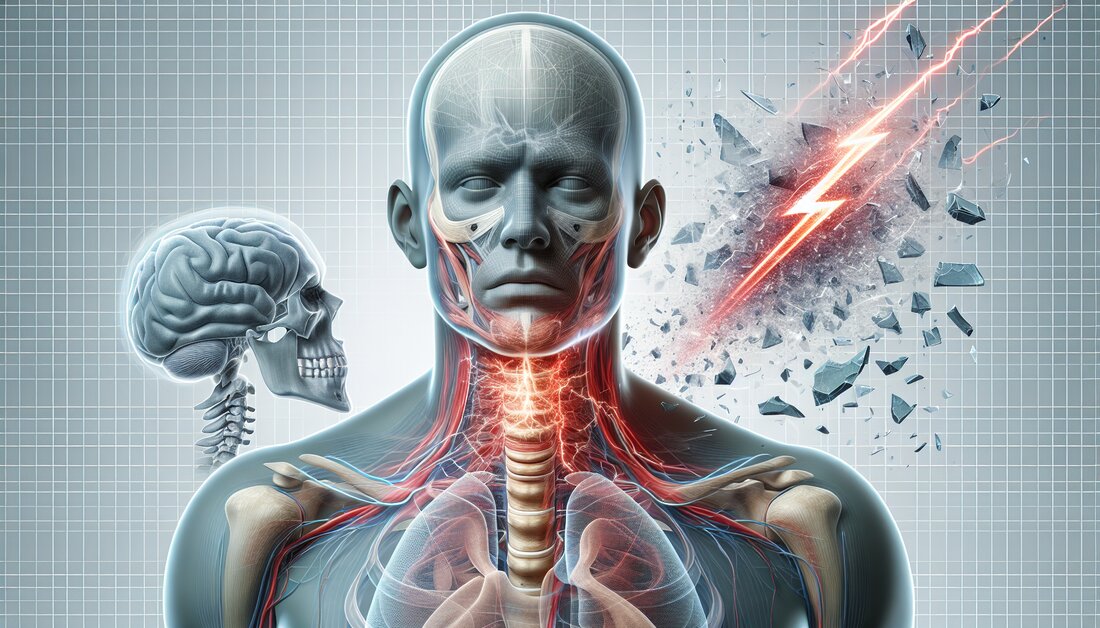Stroke after neck treatment? A clarifying overview
Interesting review shows: Immediate strokes caused by cervical spine manipulation are more likely to result from pre-existing dissections, not from them themselves. Important for practice!

Stroke after neck treatment? A clarifying overview
In a recent study published in March 2024, researchers examined the possible links between cervical spine manipulation (known as CSM) and the immediate development of strokes. CSM is a treatment technique often used by chiropractors to relieve pain and tension in the neck area. There has been concern that this treatment could cause dissection of healthy neck arteries, which in the worst case scenario could result in an immediate stroke.
However, the investigation concludes that there is no causal link between CSM and cervical artery dissection (CAD) in healthy cervical arteries. Instead, the research identified plausible thromboembolic and thrombotic mechanisms by which immediate stroke could occur after CSM. A key point here is that these mechanisms assume that CAD already exists before the CSM is performed, rather than that the CAD arises as a result of the CSM.
These findings could have far-reaching implications for practice and medicolegal issues for physicians performing CSM. They highlight the need for a thorough medical examination and diagnosis before CSM treatment to identify any pre-existing CAD and thereby minimize the risk of immediate stroke.
This research could lead to physicians changing their practices to ensure patients are properly evaluated before undergoing CSM treatment. It could also encourage the development of new guidelines and training on risk assessment prior to CSM.
Basic terms and concepts:
- CSM (Cervical Spine Manipulation): Eine Behandlungsmethode, bei der durch manuelle Techniken Druck auf die Halswirbelsäule ausgeübt wird, um Schmerzen zu lindern und die Beweglichkeit zu verbessern.
- CAD (Cervical Artery Dissection): Eine Erkrankung, bei der sich in den Wänden einer Halsarterie ein Riss bildet, was zu einer Blutung in die Arterienwand führt und das Risiko für einen Schlaganfall erhöht.
- Thromboembolisch und thrombotisch: Bezugnehmend auf die Bildung eines Blutgerinnsels innerhalb eines Blutgefäßes, das potenziell ein Gefäß blockieren (thrombotisch) oder sich lösen und in einem anderen Teil des Körpers Blockaden verursachen kann (thromboembolisch).
- Schlaganfall: Ein medizinischer Notfall, bei dem die Blutversorgung zu einem Teil des Gehirns unterbrochen wird, was zu einem Absterben von Gehirnzellen führt.
This research suggests that the safe use of CSM requires precise assessment of a patient's health status, particularly with regard to the cervical arteries, to reduce the risk of immediate stroke.
Plausible mechanisms for immediate stroke following cervical manipulation
The debate surrounding the safety of cervical spine manipulation (CSM) and the risk of resulting immediate stroke continues. In particular, the question is whether CSM can cause dissection of healthy cervical arteries and lead to an immediate stroke. However, current research refutes a causal link between CSM and cervical artery dissection (CAD) in healthy cervical arteries. This study aim was to review the literature to determine whether plausible mechanisms for the causation of immediate stroke by CSM can be identified, where immediate stroke is defined as a stroke that occurs within seconds or minutes of a CSM.
Review revealed plausible thromboembolic and thrombotic mechanisms that could cause immediate stroke from CSM. A recurring aspect of these mechanisms is that CAD is present before CSM is carried out and does not arise as a result of CSM. This statement provides significant insight into the discussion by suggesting that the real danger may exist before the manipulation even occurs.
Identification of these mechanisms has both clinical and medicolegal implications for physicians performing CSM. It highlights the importance of a careful patient history and examination to rule out existing risk factors or pre-existing conditions that could lead to CAD. It also highlights the need for appropriate patient education about potential risks.
It is important to note that current research emphasizes the need for further studies on the specific risk factors and frequency with which CSM may lead to CAD or immediate stroke. A greater focus on precise diagnostic procedures to identify vulnerable patient groups could lead to safer practice of CSM.
For further details, please refer to the full study below https://pubmed.ncbi.nlm.nih.gov/38510520.

 Suche
Suche
 Mein Konto
Mein Konto
